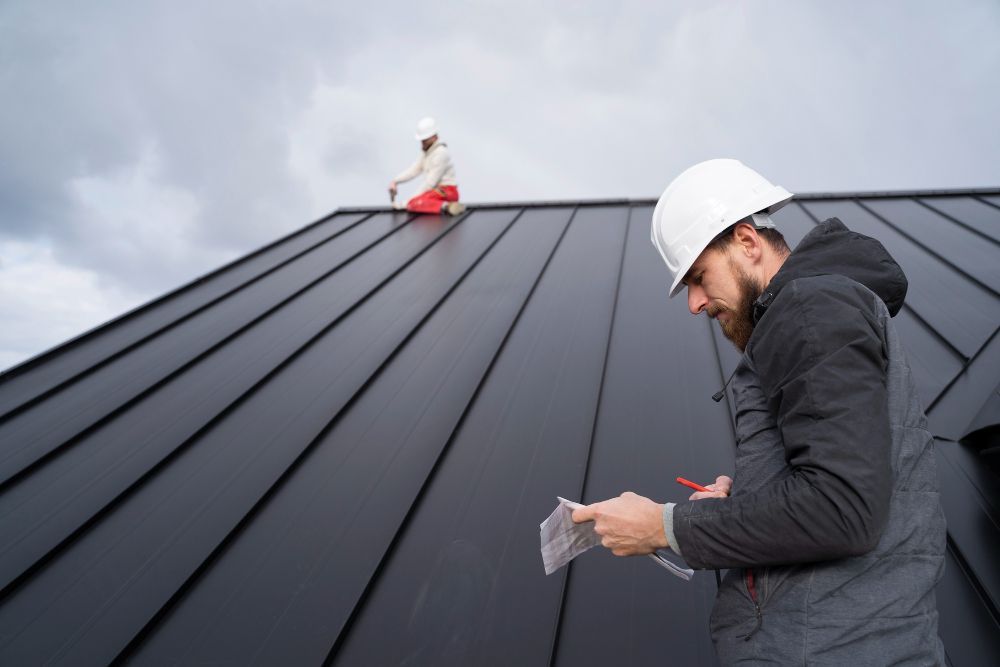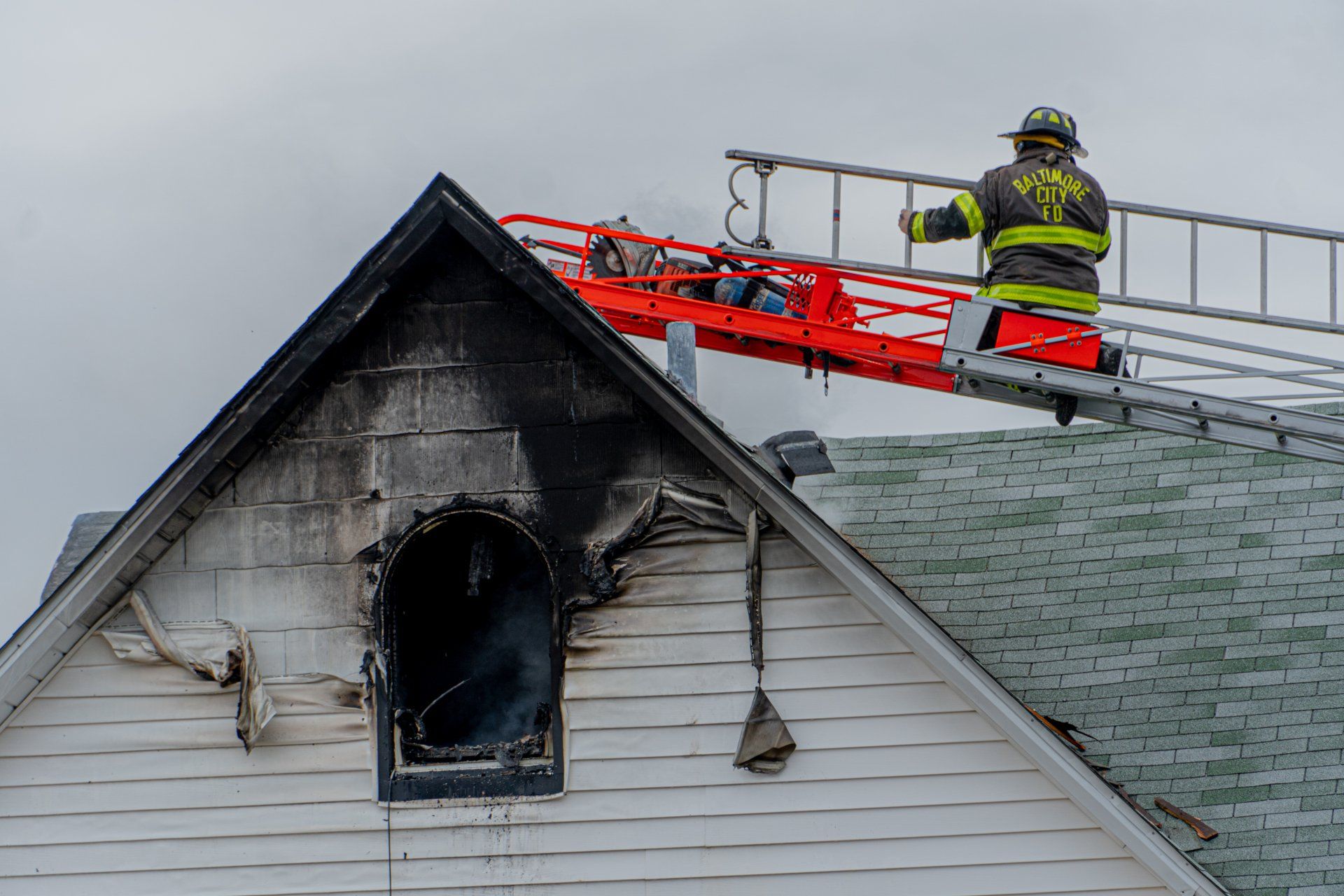Can You Install a Sloped Roof on Top of a Flat Roof?
Can You Install a Sloped Roof on Top of a Flat Roof?
Flat roofs have long been a common choice for commercial buildings and some residential properties due to their modern aesthetic and efficient use of space. However, flat roofs can present certain challenges, especially regarding drainage, insulation, and lifespan. As a result, some property owners consider installing a sloped roof on top of an existing flat roof. This idea brings up the question: Can you install a sloped roof on top of a flat roof, and what are the benefits, challenges, and factors to consider?
In this post, we’ll explore the key elements involved in converting a flat roof into a sloped roof, the advantages and disadvantages of this transformation, and whether it's a practical and cost-effective solution for your property.
Why Install a Sloped Roof Over a Flat Roof?
Flat roofs can be prone to water pooling, which can cause leaks and damage over time, particularly in areas that receive heavy rainfall or snowfall. Additionally, flat roofs generally require more maintenance and have a shorter lifespan than sloped roofs. For property owners dealing with these issues, converting to a sloped roof can offer several advantages:
- Improved Drainage: A sloped roof allows water and debris to slide off naturally, reducing the risk of pooling and associated water damage.
- Extended Lifespan: Sloped roofs, particularly those covered in durable materials like metal or tile, often last longer than flat roofs.
- Enhanced Energy Efficiency: By allowing for greater insulation options and sometimes better ventilation, a sloped roof can improve the building’s energy efficiency.
- Aesthetic Appeal: A sloped roof can transform the look of a building, potentially increasing its curb appeal and even its property value.
Is It Possible to Install a Sloped Roof on a Flat Roof?
Yes, in many cases, you can install a sloped roof over an existing flat roof. However, this process requires careful planning, structural adjustments, and may necessitate additional support to ensure that the new structure is safe, stable, and meets building codes.
Here are the main steps involved in converting a flat roof to a sloped roof:
- Assessment of the Existing Roof: A structural engineer should inspect the current flat roof to determine whether it can support the added weight of a sloped roof. This step includes checking the building’s foundation, walls, and load-bearing capacities.
- Design Planning: Next, an architect or roofing contractor will help design the new sloped roof, taking into account the desired slope, roofing materials, drainage, and aesthetic elements.
- Permit Acquisition: In many areas, converting a flat roof to a sloped roof requires building permits and compliance with local building codes.
- Installation of New Framework: To create the slope, contractors will add framing on top of the existing roof structure. This framing will support the new roof deck and materials.
- Addition of Roofing Materials: Finally, the contractor installs the chosen roofing materials, whether metal, shingles, tiles, or another option suited to your climate and style preference.
Key Considerations When Adding a Sloped Roof Over a Flat Roof
Installing a sloped roof over a flat roof is a significant project that requires careful planning and consideration. Below are some of the critical factors to evaluate before proceeding with this type of roof conversion.
1. Structural Integrity
The existing flat roof and its supporting walls and foundation need to bear the weight of the new sloped roof. This weight can vary depending on the materials chosen for the sloped roof. For example, tile roofs are heavier than metal roofs. Consulting a structural engineer is essential to determine whether your current building structure is suitable for this added load or if additional support is required.
2. Local Building Codes and Permits
Many municipalities have specific building codes governing roof types, slopes, and materials. Before starting the project, check with your local building authority to ensure that your design plans are compliant. Non-compliance with building codes can result in fines, project delays, or even the need to dismantle the new roof.
3. Roofing Material Choice
Different roofing materials have unique properties that impact durability, aesthetics, and cost. When converting a flat roof to a sloped roof, consider factors like weather resistance, weight, maintenance needs, and longevity. For instance, metal roofing is lightweight, durable, and suitable for sloped roofs, while tile roofs offer a traditional look and extended lifespan but are heavy.
4. Cost and Budget
Adding a sloped roof over a flat roof is generally more expensive than simply replacing the flat roof with a new one. Costs will vary depending on factors such as the roof's size, the materials chosen, and the need for structural reinforcements. Be sure to get a detailed estimate from a qualified contractor to understand the full scope of expenses involved in the project.
5. Aesthetic and Architectural Consistency
Adding a sloped roof can change the building’s appearance drastically. Consider whether the new roof will complement the overall architecture of your property. While the addition of a sloped roof can add aesthetic value, it’s essential to choose a style, slope, and material that harmonizes with the rest of the building.
6. Energy Efficiency and Ventilation
Converting to a sloped roof can provide opportunities for better insulation and improved ventilation, which may enhance energy efficiency. Attic space created by a sloped roof can be insulated, helping maintain interior temperatures and potentially reducing energy costs.
Pros and Cons of Installing a Sloped Roof Over a Flat Roof
Let’s summarize the benefits and drawbacks of adding a sloped roof over a flat roof:
Pros:
- Better Drainage: Rainwater and snow slide off more easily, reducing the risk of leaks and water damage.
- Reduced Maintenance: Sloped roofs typically require less maintenance than flat roofs.
- Increased Lifespan: A well-constructed sloped roof often outlasts a flat roof.
- Improved Energy Efficiency: Allows for better insulation options, which can lead to energy savings.
- Enhanced Aesthetics: A sloped roof can give your property a more traditional or modern appearance, potentially boosting its value.
Cons:
- Higher Cost: Converting a flat roof to a sloped roof is a significant investment due to the need for structural modifications.
- Longer Installation Time: The process of installing a sloped roof over a flat roof can take longer than a simple roof replacement.
- Building Code Compliance: Some areas may have restrictions or requirements for roof types and materials.
- Structural Requirements: Additional framing or support may be required, which can increase the project’s complexity and cost.
Conclusion: Is a Sloped Roof Over a Flat Roof Worth It?
For property owners dealing with flat roof challenges such as water pooling, frequent repairs, or energy inefficiency, installing a sloped roof over a flat roof can be an excellent solution. The advantages of better drainage, reduced maintenance, and potential energy savings make this a worthwhile investment for many.
However, it’s essential to weigh the costs, structural requirements, and design considerations carefully. A sloped roof installation is a complex project that requires expert planning and execution to ensure safety, durability, and compliance with local building codes. By consulting with a structural engineer and experienced roofing contractor, you can determine whether a sloped roof conversion is the right choice for your property and achieve a functional, attractive, and long-lasting result.
Corporate Office
13355 Noel Road, Ste 1100
Dallas, Texas 75240
3010 LBJ Freeway Ste 1200
Dallas, Texas 75234
Company
About Us
Services
Gallery
Testimonials
Office Hours
Monday – Friday – 08:00am – 5:00PM
Saturday – (Closed)
Sunday – (Closed)
Corporate Office
113355 Noel Rd Ste.
Dallas, TX 75240
3010 LBJ Freeway Ste 1200
Dallas, TX 75234
info@tigroofing.com







